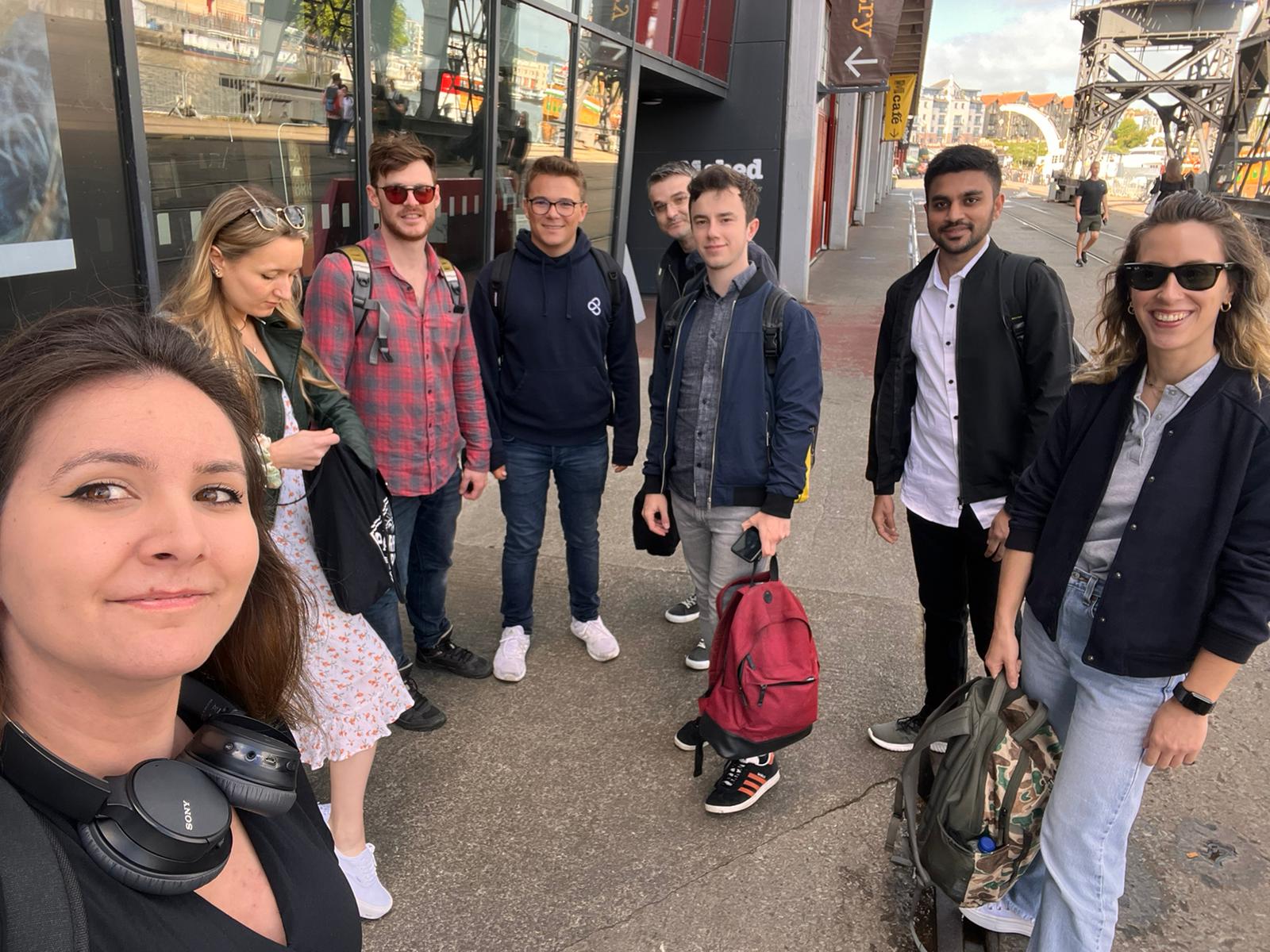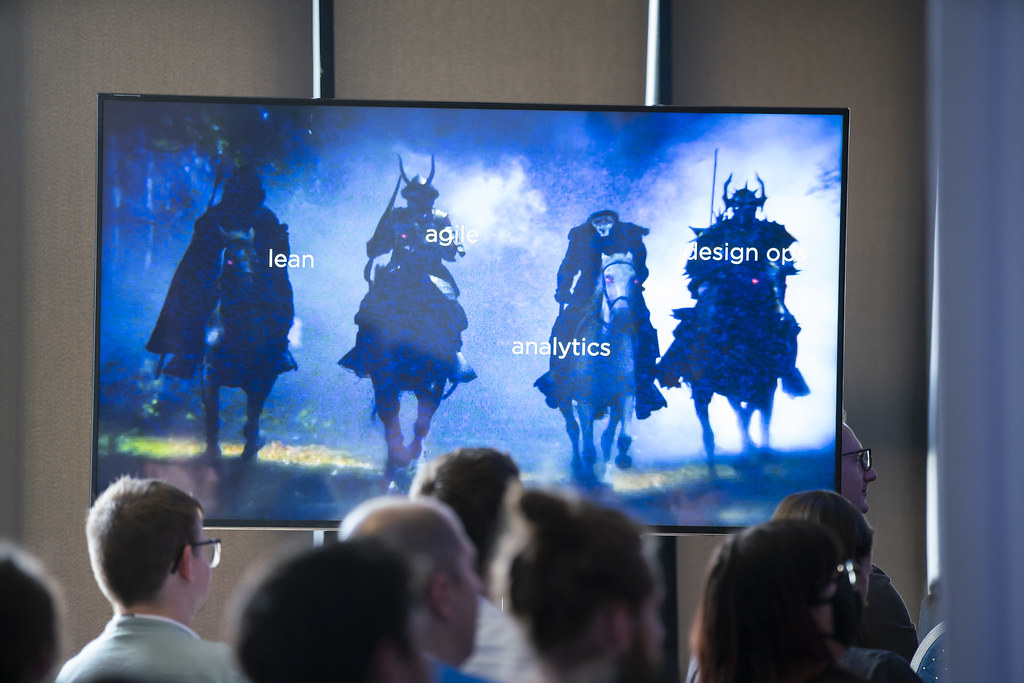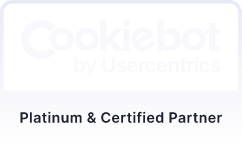Penetration testing, often abbreviated as pen testing, is an essential process to ensure you maintain a safe and secure website. But what exactly does pen testing involve, and how can you rest assured your agency partner is covering all potential vulnerabilities for you?
This article will provide a detailed guide to penetration testing, helping you minimise your security risks and ensure your website is fully protected.
In a recent series of articles published in our resource library, we provided an in-depth explanation of the end-to-end process of building a high-performance, enterprise-grade website. (If you’d like to read that series first before learning about pen testing, you can start here).
After you’ve worked with your agency partner to successfully build your website, you’ll also need to ensure your site is protected from cyber security threats. With that in mind, you should understand the important role that pen testing plays in effective website security and maintenance.
What is Penetration Testing?
Penetration testing is a form of website testing that’s used to identify security vulnerabilities When conducting pen testing on your site, your agency will simulate a range of cyber attacks that could be used by cyber criminals or malicious software (malware).
The purpose of this is to identify security weaknesses within your site and take action to prevent them from being exploited in the real world. This approach goes beyond basic tests, as it doesn’t just list the vulnerabilities, it examines how they could be exploited and helps to prevent that from happening.
Why is it Crucial for an Agency to Conduct Penetration Testing?
Website security is critical in today’s digital business landscape. Cyber security threats have become highly intelligent and sophisticated, now capable of penetrating even the strongest security networks.
For instance, global technology giant Acer was the victim of a cyber security attack that demanded a ransom of $50 million USD in recent years.
The outcomes of a cyber attack on your website could be catastrophic, either through sensitive data being stolen, lengthy losses of business continuity, or even reputational damage.
Remember, your site’s security isn’t just vital to you as a business, it’s also something your clients need assurance with when they agree to work with you. You should be taking as many proactive steps as possible to ensure your security measures are rigorous enough to match high levels of risk.
Covering All Bases for Robust Security (in WordPress)
It’s useful to be conscious of the common security weaknesses and pitfalls cyber criminals typically aim to take advantage of.
Security vulnerabilities can be created when your website is running on outdated versions of your platform, or if something hasn’t been configured or integrated properly. Other common pitfalls include weak authentication measures and insufficient protection from the perspective of your users.
With platforms like WordPress, there are some areas in which less experienced agencies could allow security vulnerabilities to creep in as well. For instance:
- Auto-updates – When your platform’s software is automatically updated, changes in the code can cause new security weaknesses to arise.
- Plugins – Using WordPress plugins from untrustworthy sources, or neglecting to update and maintain your plugins properly, can also cause security issues.
This is one of many reasons why it’s important to work with an experienced agency partner who has proven platform-specific knowledge and expertise. Your agency should know your CMS of choice inside out, and should therefore be well aware of all the most common security pitfalls and targets for cyber attacks.
What Does Effective Penetration Testing Involve?
To conduct pen testing, your agency’s security experts will run through a process that attempts to penetrate your site’s security measures.
This is usually done in stages, as follows:
1 – Planning and Preparation
- Review the results and analysis of any previous tests (if there are any)
- Define the scope of the testing, including which tests will be performed
- Gather all necessary data and information on the system to conduct the testing
- Determine the criteria of success or failure for the tests.
2 – Running the Tests
- Use automated tools to scan for vulnerabilities and identify weaknesses
- Attempt to exploit the identified weaknesses
- Repeat the tests with different types of user roles and permissions
- Measure the outcomes against criteria for success or failure
- Create a report on the outcomes and results of the tests.
3 – Post-Testing
- Review the reports and analyse the results
- Remediate and resolve the vulnerabilities that were able to be exploited
- Re-test the vulnerabilities to ensure remediation was successful.
The Benefits of Thorough Penetration Testing
Working with an agency partner who can support you with ongoing pen testing is a necessary step towards gaining enterprise-grade security for your website.
Technology changes so quickly today. Your platform receives updates regularly, your site is always growing, and cyber criminals are constantly finding new ways to breach your defences and gain access to your data. Penetration testing allows you to keep the pace with new emerging vulnerabilities.
Conducting regular pen testing can also help improve client relationships and create competitive advantages as well. In certain industries, a demonstrable commitment to security will be greatly appreciated by your target audience. This can help to differentiate you from the competition and provide the trust required to attract more prospective clients to work with you.
Website Security is a Never-Ending Battle
While every business with a website faces tremendous security risks today, this is a proven process that can help to minimise that risk and give you the confidence you need in your site’s security.
Any agency partner you work with should have the knowledge and expertise to understand the importance of pen testing, and should insist on making this an integral, ongoing part of your site’s maintenance.
Would you like these insights straight to your mailbox?
- Bespoke development capabilities
- Easy integration with existing systems and legacy technology
- Scalability and performance in peak traffic
- Enterprise-grade security
- Quick and easy editing capabilities
- Drupal is a highly secure platform, which is a crucial quality for a CMS to have.
- It’s very intuitive for users who have coding experience or advanced content management skills.
- It has a great community of users surrounding it, which contributes a lot of value and is able to provide support.
- It also has hundreds of unique thematic options to choose from when designing your site.
- Drupal can be hard to work with for non-technical users, as it lacks simplicity and provides limited customisation.
- It can take a long time to get up and running, which means your costs will be quite high if you work with an agency partner.
- It’s also worth noting that the version of Drupal most businesses use now (Drupal 7) will be reaching end-of-life soon.
- Sitecore is purpose-built for large businesses, guaranteeing an enterprise-grade experience.
- Sitecore is a robust CMS with a high level of in-built security.
- It actually provides a fully-managed ‘digital experience platform’ that comes with more capabilities than the average CMS.
- It also offers great personalisation and excellent pre-built features.
- Sitecore is an expensive option, even if you have a large budget to work with.
- It requires you to procure licenses to begin using it, and also restricts certain capabilities unless you progress to higher tiers of licenses.
- It typically runs with hierarchical, complex workflows that might be frustrating for small or agile teams.
- Umbraco’s scalability makes it very suitable for large businesses.
- It’s free to use and open-source, with an active community of users supporting it.
- It allows you to manage a high volume of pages easily and efficiently.
- It’s another platform that comes with a high level of in-built security.
- It can be difficult to work with for the average user. As with Drupal, Umbraco is mostly suitable for more technical users who have coding skills or some development experience.
- This complexity again increases the likelihood of higher costs with your agency partner (if you go that route).
- It’s common for sites built with Umbraco to be reported as slow, for both back-end editing and the front-end user experience.
- WordPress is extremely scalable and dynamic. It can easily grow and evolve as your business grows, continuing to meet your changing needs.
- It’s renowned for its ease-of-use. Because of this, it enables you to deliver your projects quickly and efficiently.
- It’s highly customisable, making it ideal for bespoke development. With the right knowledge and skills, you can build almost anything with WordPress.
- It also typically comes with a very low total cost of ownership (TCO). You won’t need to add on new features or capabilities, nor pay for costly extra work to handle platform upgrades or updates.
- If you apply too many plug-ins, WordPress sites can slow down and experience dips in performance, but a good agency partner should encourage you to minimise the use of these.
- Some still see WordPress as an unprofessional platform used mostly for small blogs, but that old myth couldn’t be further from the truth today.
- WordPress is a secure platform, but plug-ins can create vulnerabilities if they’re not tested well or taken from untrusted sources. Again, a good agency partner should guide you with this to reduce the risk and prevent any issues.
- 1,920px – This covers most external computer monitor sizes
- 1,366px – This covers most laptop screen sizes
- 992px – This covers most Notebook and iPad devices
- 768px – This covers most other tablet devices
- 375px – This covers most smartphones.
- Keep your design simple and your content succinct
- Prioritise the preferences and best interests of your target audience
- Make your design elements as clear as possible
- Maintain consistency
- Ensure your brand, and your company’s identity, have been accurately represented through the design
- Use power of visual imagery to capture and retain your visitors’ attention
- Make your call-to-action as strong and compelling as possible
- Don’t create anything that interferes with the goals of your UX.
- Perceivable
- Operable
- Understandable
- Robust.
- Use contrast and blank space to make your content easy to perceive
- Use bold colours
- Use font sizes no smaller than 14px for desktop and 13px for mobile across the whole site (although, this does depend on the font you use)
- Use headings and structure correctly to organise content clearly on each page
- Make all your content easy to both see and hear
- Write all your copy in plain, simple language
- Avoid any flashing or blinking imagery or video content
- Write simple, clear, and helpful error messages.
- 24/7 support
- Back-up and disaster recovery
- Fully-managed service
- Automated monitoring and alerts
- 99.99% up-time
- 100% pass-rate for data centre audits.
- WordPress by itself, out-of-the-box, is secure enough for most businesses to use.
- WordPress in the hands of an inexperienced or negligent agency will create significant security risks.
- WordPress is the hands of a dedicated, specialist partner is a platform you can trust and rely on without any concerns.
Digital Business
30 November, 2022
Comparing the Leading Content Management Systems (CMS) for Large Businesses
A content management system (CMS) is a type of software-based technology, used to build and manage websites and other digital products. A CMS allows you to easily create, edit, and publish digital content across a range of online channels, such as the web and mobile. This is the most common technology platform used by businesses to build assets such as websites, with almost two thirds (63%) of all sites on the Internet now delivered via a CMS.
With that in mind, it’s clear why most businesses today are heavily reliant on this technology. Whether you’re developing something new from scratch or switching from an old platform to a new one, selecting your CMS is an extremely important decision with a lot riding on it. But with such a vast landscape of digital solutions to navigate, and so many different options available, finding the right CMS can be overwhelming.
To help you through the process of finding the right CMS, this article compares four of the most common options for large businesses. We’ve also listed their pros and cons, and provided some additional considerations that will be useful for you to think about along the way.
First, the Criteria
A CMS can be used to build various digital products and assets, from websites and mobile apps to bespoke systems like staff portals and internal training platforms. Particularly in large businesses, it’s common to need to create some bespoke features, functionality, or digital processes as well. Whatever it is you need, you should aim to find a platform that’s capable of delivering on your specific requirements.
Here are some points to include in your criteria when researching the options for your CMS:
Now we’ve covered what a CMS should be able to do when you start implementing it within your business, let’s look at the different platforms available to you.
Option 1 – Drupal
The Pros:
The Cons:
Option 2 – Sitecore
The Pros:
The Cons:
Option 3 – Umbraco
The Pros:
The Cons:
Option 4 – WordPress
The Pros:
The Cons:
Interested in learning more? Check out our related article here, where we explore the benefits of WordPress for large businesses in greater detail.
A Brief Word on Agency Partners
As touched on earlier, you’ll also need to consider whether you want to take the approach of working with an agency partner or not. For large businesses, most development projects tend to involve complex requirements that are almost impossible to manage without the support of an experienced agency.
An agency partner can provide you with strategic guidance, platform-specific skills and tools, and expertise to help you gain as much value from the technology as possible. While it’s perfectly valid to decide to implement a new CMS without an agency working alongside you, doing so will probably make things a lot more challenging, a lot more expensive, or possibly both.
All the platforms mentioned here have their benefits. But they’ll each be significantly easier to use, and will deliver far greater return on investment (ROI), if you have an experienced partner involved.
How to Choose the Best Option for Your Business
Keep in mind that every business is unique and every web development project is different. These platforms are all good options in their own way, but a solution that works well for the majority of organisations might not be the right choice for you.
Whether you’re building a bespoke website or migrating an existing site to a new platform, you have to be thorough in your assessment and make the right choice for your specific business.
To really understand the pros and cons of these options, you first have to be clear about exactly what you need and what you’re aiming to achieve. You’ll then need to determine which solution best aligns with your requirements, budget, and strategic objectives.
If you’re in the process of assessing solutions to help you deliver a bespoke development project, read our comprehensive guide to evaluating and selecting the right platform here.
Would you like these insights straight to your mailbox?
Digital Business
28 February, 2023
Seven Simple but Effective Tips to Improve the Usability of Your Website
Providing your website’s visitors with a great user experience (UX) is a challenge. Especially for corporate websites that require sophisticated features and functionality, this can be an ongoing struggle. But it’s a challenge you need to solve if you want to stay relevant and remain competitive in today’s digital business landscape.
Usability is the measurement of how easy or difficult your website is to use for your audience. Good usability makes the experience of using your website as convenient and simple as possible for all your site’s visitors.
Despite the obvious value of this, usability is often neglected by businesses when building a website. That could be because you don’t have the time or budget to follow best practices, you don’t have the in-house design expertise, or you simply aren’t aware of just how important usability is today. Whatever the reason, you can’t afford to take the risk of releasing a site with a poor UX.
Understanding the Importance of Web Usability
You’d be amazed by how many websites these days fail to give their users an experience that delivers on their basic expectations. If your website falls in that category, poor usability may have an influence on whether your users adopt or reject your site. This could be the difference between a visitor abandoning a poorly designed page or sticking around and converting to become a customer.
So, how do you ensure your website doesn’t end up on this ever-growing list of failures?
The key is to focus on your users’ needs, and put yourself in their shoes when planning, designing, and developing your site.
Even if your site isn’t customer-facing, good usability is also crucial for internal systems. Employees are users too, and their adoption – or rejection – of your technology will also have an impact on your business.
This is easier said than done, we know. That’s why we’ve provided a selection of tips and advice to help you overcome this challenge.
How to Improve the Usability of Your Website
1 – Keep it Simple
Whenever you’re thinking about UX, always follow the rule that simplicity is best. If a website has a design or functionality that’s complicated, its usability will suffer. Try to keep things as simple as possible at all times.
2 – Nail the Fundamentals
While some design choices, like colour and font, can be argued as subjective, there are certain aspects of usability that are more objective. Getting the fundamentals right will help you ensure you’re delivering great usability.
For example, optimising your site to ensure its pages load quickly, organising your pages with proper headings and sub-headings, making sure clickable buttons and links stand out, avoiding making any text or touch-points too small, even providing clear, useful error messages, and so on.
3 – Adhere to Accessibility Guidelines
Usability shouldn’t be confused with accessibility. Accessibility’s purpose is to make all technology accessible and easy-to-use for everyone, equally, with a significant focus on those with disabilities and other difficulties.
To ensure your website meets the current requirements for accessibility, you need to follow a set of principles and standards known as the Web Content Accessibility Guidelines (WCAG), linked here.
If you’re working with an agency, they should have best practices for accessibility already incorporated into their approach. Make sure you check this anytime you’re evaluating agency partners for a website project.
4 – Learn from Experience
We’re all users of websites, and we all know how it feels to encounter a frustrating UX. Use your own experience of this to try and build empathy for your users and what they might like and dislike. Any time you come across a website that gives you a bad experience online, make note of this and ensure you don’t allow similar problems to creep into your own site.
5 – Don’t Make Assumptions
While the previous point is important, it’s also crucial to realise it’s not enough. Using your own experience will only get you so far and, in some cases, it could even cause additional problems.
Remember that usability is dependent on delivering for your target audience’ personal preferences when interacting with your website. It’s always risky to assume you know how your users think and feel.
Don’t make decisions about design and functionality without considering who the target users are and what they need from their experience. This leads us nicely into the next point.
6 – Test With Real Users
It’s always necessary to test the usability of your site with real people who are part of your target audience. The best way to ensure your website will provide a great UX is by asking real-life users to test it out, collect their input, and put that feedback into the final version. This is known as usability testing, which is a phase of the design and development process that every successful project requires.
7 – Know When to Ask for Help
All of these tips are helpful to be aware of, but for the average business they can be daunting and difficult to put into practice. That’s why the majority of large businesses with outstanding websites have worked alongside a specialist agency partner with expertise in user-centric design. To ensure your site has great usability, it’s often necessary to find the support of an agency who has proven experience delivering similar projects successfully.
Usability Should be a Priority
Usability is crucial to the success of any website, but it’s something most businesses are still struggling to get right. Ultimately, though, your users are the ones who will determine the success or failure of your investment.
You have to put yourself in their perspective when designing and developing your site, and that includes getting real people’s feedback and approval. Only then will you create something that meets your target audience’s expectations for speed, convenience, and simplicity.
If your website provides a clunky or frustrating UX, most users today won’t hesitate to go elsewhere rather than waiting around to complete their task on your site. If that task in question is purchasing a product or service, you’ll see that poor usability will eventually begin to have a negative impact on your business.
Following the tips and best practices listed in this article will help you avoid that trap and create a UX that’s better than most websites. Doing that will begin to drive positive outcomes like greater adoption rates, improved customer retention and loyalty, and a stronger return on investment.
To continue learning with a deeper dive into the topic of web usability, including more insight into its principles, additional guidance on design best practices, and current trends and future predictions, read our related article here.
Would you like these insights straight to your mailbox?
UI Design
15 May, 2023
What Does Successful User Interface (UI) Design Look like?
As part of our web design series, we recently explained the process we follow when designing the UX of a website. If you’ve not read that already, it will be useful to go and have a look first before reading this article.
A study by Forrester Research has found that a well-designed UI has the potential to increase your website’s conversion rates by up to a 200% while UX design could raise conversion rates by a staggering 400%.
Whether you’re working with a web design and development agency or an independent designer, this process is equally important. Nailing the UI design process is a crucial step towards producing a website that will maximise engagement with your target audience and help you achieve your business goals.
So, let’s take a detailed look at how to run a successful UI design process.
User Interface (UI) Design at a Glance
The UI design process is the creation of the visual design elements of your website. Think about UI as the way in which you convey your brand’s visual identity and bring your UX to life. The UI is there to facilitate the UX.
How Does the UI Design Process Work?
Earlier in the process, we recommend conducting a visual exploration exercise, using mood boards to gain a clear understanding of how your brand will be conveyed and how your website will look and feel.
That visual exploration phase of the project is a pre-cursor to your UI design, as it creates the visual identity of the website, including use of colour, font, blank space, buttons, and more. Some agencies do this as part of the UI phase, but here at SoBold we like to keep it as its own stand-alone phase. You can learn all about the visual exploration phase and how it works here.
After you’ve been through the UX design process, you’ll have approved a set of wireframes, which give you a blueprint of your website’s structure and flow before anything is built properly.
Once you’ve approved those wireframes, then the visual design created with the mood boards will be applied to bring them to life. This is essentially how you create your UI.
Your agency will typically begin with the design of your website’s homepage. Like each phase previously, you can expect this UI design process to be collaborative. Be prepared to have all the stakeholders available to provide feedback to your agency, and work with them to perfect the design when it’s combined with the wireframes.
Once the homepage is approved, your design will then be applied across all the pages of your site. Again, this is an iterative, collaborative process based on feedback and revisions.
Responsive Design Testing
On completion of the desktop designs, your agency partner will work on designing the site across multiple break-points. To ensure your site is responsive across all the most popular devices, the following break-points should be tested as a minimum:
You’ll then reach the exciting part, where your website is fully designed for you to view, test, and play around with. Once you’re happy with the design across the different break-points, your agency partner will be ready to prepare the design for a development handover.
What Does Effective UI Design Involve?
Good UI design is something that should feel seamless and almost invisible to your visitors when they land on your website. The aesthetics and visual style should be simple and engaging, while not distracting from the UX.
These days, you only have a matter of seconds to make a positive impression that can retain your visitors’ attention, so it’s crucial you don’t over-complicate things. But what differentiates good UI from bad UI in practical terms?
Like with UX design, there are some best practices you can follow to ensure your website has an effective, attractive UI.
Follow these guidelines to create a UI that delivers the desired experience for your visitors and supports your website’s strategic objectives:
Check out our related article for seven helpful tips to ensure your website is designed with great usability here for additional guidance.
The Importance of Accessibility
Accessibility is the practice of making technology as easy to use as possible, and fully accessible to everyone. While web accessibility is largely intended to help people with disabilities gain better usage of technology, it’s also much broader than that.
There are people who have difficulty using certain types of, or aspects of, technology who don’t have a disability. For instance, someone with deteriorating eyesight may find it difficult to read small text on a smartphone screen.
It’s also important to ensure your website is as easy to use as possible for the average person as well, because you should always strive to deliver the best possible UX for all your visitors. Accessibility is a key driver of this.
The Web Content Accessibility Guidelines (WCAG), which are used to define what constitutes good accessibility, lists four key principles of web accessibility that should be followed by all websites.
This means your website must be:
Web accessibility is an important topic, so we’ll talk more about that in a separate article. For now, it’s worth noting that any web design and development agency you work with should consider accessibility a top priority when designing the UI of your website. If they don’t, you should challenge them and ask why not.
Here at SoBold, this is built-in to all our design processes. We believe that all technology should be inclusive and equally available to everyone, regardless of their physical ability, location, personal background, or any other factors.
Some design best practices that we’d recommend you always follow to ensure your website is fully accessible, from a UI design perspective, include:
Preparing Your Website for Development
As you can see, UI design is mainly a case of applying the visual design that was created with the mood boards to your UX wireframes with the agreed flow. Good UI is no more than a clean, simple design that accurately represents your brand identity. While it sounds straightforward, it’s important to remember this is just one phase in the holistic, end-to-end process of web design.
To conclude the design process after the UI is complete, your agency will prepare your site’s designs for development. To learn how this process works, understand what to expect, and ensure your own web development process runs smoothly, read our next article in the series here.
Would you like these insights straight to your mailbox?
Industry News
21 June, 2022
Pixel Pioneers Bristol 2022
If you’ve never been to a conference of any type before, you possibly think you already know the important areas of your profession and can find out any developments from your colleagues or the internet. At least that’s what I thought prior to attending Pixel Pioneers 2022.
Which option sounds more appealing to you? Pick up extra skills on occasion, or go to a conference and absorb a mega-dose of industry knowledge, make connections and enjoy exploring fresh surroundings? Luckily at SoBold we have the opportunity to do both.

The conference covered both ends of the telescope – from broad topics such as energy consumption, to a fifty minute talk about the brief three milliseconds your screen goes blank in between webpage loads. How the visually impaired experience the internet, to technical developments in styling / fonts.
My personal hero was Chris How – his mantra of valuing your customer’s time and giving them small moments of delight strongly resonated with me. In accordance, I want to guide you through the content of the conference, with links to the core material that will best replicate what the SoBold team saw, whilst valuing your precious time.
GAVIN STRANGE : Less Thinkering, More Tinkering
A must watch to boost your levels of creativity. Gavin shares his personal and professional projects with Aardman Studios. Lots of useful insights into reaching the pinnacle of creativity. Highly engaging delivery, visuals and plenty of ‘further reading’ material. Definitely worth watching in entirety. Gavin Strange website – will give you a sense of his creative flair and influences. https://www.jam-factory.com/
“It’s better to beg for forgiveness, than ask for permission.”
Gavin Strange

BIANCA BERNING : Variable Fonts – WTF?
From a technical and design standpoint, learning about variable fonts is incredibly useful. Towards the end Bianca veers into the potential application of variable fonts – imagine a world where your computer mutates its content to fit the viewer’s specific needs. If you’re looking for new avenues for unique artistic features for your website – this talk is for you. Everyone should have a play with variable fonts – try it here https://v-fonts.com/

CHRIS HOW : You Got to Fight for the Right to Delight
Chris’s choice of examples and commentary is intentionally entertaining and eclectic. His approach to design changes your criteria for success and also would decisively influence your next project. Essential viewing. Whether you’re a seasoned designer or developer short of a design, this talk will give you a guiding direction. Information on the Kano product roadmap here. https://www.productplan.com/glossary/kano-model/

LÉONIE WATSON : Accessibility: The Land That Time to Interactive Forgot
Visually impaired people experience the internet through screen readers – the internet described in words. Léonie’s valuable insight will definitely re-balance your priorities and appreciation for how websites should function. Some of the technical history she overviews was a bit lost on the audience but the switch in mindset is valuable. Important to dip into, especially for gleaming a deeper understanding of how a web document is compiled and loaded. It might sound ‘techy’ but it’s like understanding how our lungs work – illuminating. If you haven’t viewed any of your own websites using a screen reader – you definitely should. For a great sense of how the net is best experienced for visually impaired users – just check out her website – tink.uk
LUKE MURPHY : Lightning Talk: Design Tokens – Searching for a Source of Truth
Design Tokens act as a very useful tool for blending the boundaries of where design and development meet, in fact, they act as a technical element that affect design and development in equal measures. If you have no idea what a design token is – this talk could unlock a tonne of structure for your product. Here’s an overview article on design tokens

HANNAH SMITH : How to Make Digital Services More Sustainable
Hannah Smith’s talk invited us to critique our energy consumption and make changes to our habits as both consumers and producers of digital content. She makes the case that space travel is a waste of resources, and that using less lays the path to fulfilment. See if her arguments resonate with you. Hannah’s book recommendation – Doughnut Economics by Kate Raworth
JHEY TOMPKINS : Supercharge Your Skills with Creative Coding
A mad professor of CSS and JavaScript – Jhey has a mixture of technical tricks and interesting libraries for speech recognition. Deadpan yet full of colourful examples, Jhey clumsily demonstrates his collection of magical creations and challenges you, the developer, to break out of your ‘siloed’ mentality for visual presentation. Check out his catalogue of wondrous CSS/JS creations here

STUART LANGRIDGE : You Really Don’t Need All That JavaScript, I Promise
Painting with the broad brushes down to the nat-hair infinitesimally small details, Stuart reminds us of the importance of returning to the basics in order to best utilise the web. Unfortunately some of the libraries he suggests do not have extensive compatibility and thus aren’t for mainstream production… yet. His insight does provide a deeper understanding of the mechanics of the tools we use, although the message is quite drawn out. Example of the shared transitions js library https://codepen.io/drenther/pen/NjzeOO
RACHEL ANDREW : What’s New in CSS?
Rachel Andrew – new css features either in or emerging from or newly arrived from CSS-land. Truly at the coalface of emerging CSS features. For a frontend developer it was akin to being shown new letters in the alphabet that were being proposed. A summary of similar information can be found here – https://www.smashingmagazine.com/2022/03/new-css-features-2022/

Bristol itself is well worth a visit – a centre for nightlife, hedonism and youthful idealism. Simply walking around the harbour area in the daytime will refresh your appreciation for one-of-a-kind shops and overflowing street art. Make sure you have plenty of free space in your phone for all the photos. The SoBold team had a very enriching experience and bonded even tighter as a team. I hope to see you at the next one!
Links to the conference videos will be available via the Pixel Pioneers website.
Would you like these insights straight to your mailbox?
Digital Business
25 January, 2023
Is WordPress Secure Enough for Large Businesses?
Summary
Despite being the most popular content management system in the world, many large businesses and organisations in strictly regulated industries are still asking, “Is WordPress secure enough for us?”
This article will give you a detailed explanation of how WordPress can provide enterprise-grade security, to help you make your own decision about whether it’s secure enough for your own business. We’ll also share some helpful tips to enhance the platform’s security and reduce its risks even further.
As technology has become more pervasive in our daily lives, cyber security concerns have intensified, especially in the workplace. Each year, we read about more high-profile cases of global brands becoming victims of malicious cyber attacks, most often with sensitive data being the real target.
As a business, you should be increasingly careful and vigilant about the technology solutions you deploy today. This is even more important for large businesses and organisations in industries with strict regulations, where the consequences of security issues can be catastrophic.
When you’re choosing a content management system (CMS) to build critical digital assets like your website, security must therefore be a top priority.
Despite being the most popular CMSs in the world today – powering almost 45% of the world’s websites – WordPress is still seen by some as the platform for smaller organisations. You’d think its popularity alone would be sufficient evidence that WordPress is secure, especially as a large fraction of that user base includes enterprises across both the public and private sectors. However, when it comes to WordPress security, there are still some question marks.
So, is WordPress secure?
Yes, absolutely.
But there are certain factors and potential pitfalls you should be aware of if you’re considering WordPress as your CMS of choice.
Understanding Security in a CMS
As business challenges with cyber security and data protection continue to grow, selecting a platform that offers robust security is crucial. But how does that work, exactly?
Ultimately, a CMS like WordPress is just a piece of software, and all software can be vulnerable to security issues in a variety of ways.
The most obvious of these is a cyber security attack, either by hackers, a virus, or malicious software (malware). Any CMS used in a business environment needs to be built to withstand these attacks on a daily basis, and WordPress is definitely capable of doing so.
Another significant risk is when software has accidental weaknesses, issues, or vulnerabilities – known as bugs – built into its code. Bugs are common in software, and they can manifest as anything from a box appearing in the wrong place on your website to a platform vulnerability that leaks mission-critical data to cyber criminals.
Bugs aren’t difficult to fix, and we’ll explain later in this article why WordPress users can be confident that these kinds of risks are minimal with the platform.
However, when it comes to a CMS’s security, it’s important to understand the following point:
The biggest security risks, and the greatest opportunities for cyber criminals, are unsafe user behaviour, lack of best practices, insufficient maintenance, and poorly built sites. Not the platform itself.
Your behaviour, and the behaviour of your end-users, is an area that can be exploited or cause problems if you don’t prioritise security. That’s why it’s necessary to take a proactive, rather than reactive, approach to protecting your data. The rest of this article will help you do that, and remove any concerns you still have about WordPress security.
Is WordPress Secure?
The misconception that WordPress isn’t secure enough for large businesses still lingers, but why? Well, the main reason is because the platform is free-to-use, and so it was initially most popular among B2C blogs and smaller independent businesses.
Today, however, this couldn’t be further from the truth. Industry-leading enterprises such as private equity advisory firm Rede Partners LLP, global investment firm Coller Capital, and global research and advisory leader Forrester use WordPress for their CMS, just to name a few. This goes a long way to proving the apprehension towards WordPress security is unnecessary.
So, let’s explore the WordPress platform in more detail to understand why these global enterprises have full confidence in the security of their data, as well as the data of their clients and partners.
WordPress is already a secure, stable platform out-of-the-box.. You can rest assured its core code is highly secure, because it’s overseen by a team of security experts who thoroughly test and quality-check it on a continual basis. They regularly release updates and reinforce any potential weaknesses before they’re exploited to protect you against any new-found threats.
A team of security analysts study the ever-changing cyber security landscape and respond to it with speed and precision.
While WordPress may be seen by some as a CMS for small businesses, the speed at which security updates are implemented is arguably the best in the world when compared to other platforms.
WordPress is also open-source software, which means all the code it’s built on is available to the public. Anyone from outside the WordPress team can view it, download it, and make adjustments to it. Users often suggest their own changes and updates to the code by submitting them to the WordPress moderator team for approval. If improvements are made to the WordPress code, these updates will be released to the global user base.
These people are part of a global community of dedicated, passionate users who work hard to ensure the platform is always developing into the best version of itself possible. Anything WordPress’s own team misses, the developer community will catch. This means users are often fixing bugs and shutting down potential opportunities for cyber criminals, keeping the platform safe for everyone else.
WordPress Security Vulnerabilities
While WordPress does have the support of some of the brightest developers in the world, who keep it as secure as possible, they can’t take care of everything for you. As mentioned earlier, your biggest security risks will probably lie within your own business, regardless of what CMS you’re using.
Additional security vulnerabilities can arise in certain scenarios, often caused by ignoring best practices or failing to take responsibility for simple maintenance of the platform.
Web Hosting
Your hosting environment is an important factor that can influence how secure and protected your data will be. Your WordPress websites will be hosted in a server that stores your files and data in a data centre.
WordPress, like any platform, should be hosted in a secure environment, with an experienced provider who prioritises security as part of their services. This should include putting proactive security measures in place for scenarios like unplanned down-time or even natural disasters.
Secure hosting should also involve automated monitoring for malicious activity and vulnerabilities in your servers and software, as well as incident response.
Before choosing your hosting service, be sure to carry out some due diligence and look into the security best practices of your host. In many cases, it’s wise to work with an agency partner who will help you with this, but more on that later.
Plugins
While the WordPress community is one of the platform’s greatest strengths, interacting with unsafe additions to the software can also be its downfall for some businesses. It’s important to be cautious of the constant stream of new features, updates, and plugins being made available, because some of them could create issues for you.
To avoid these problems, you shouldn’t download plugins unless they come from recognised, credible sources. Furthermore, you should always ensure all your plugins are correctly tested, maintained, and updated.
We appreciate this may sound complicated. For that reason, you should entrust this responsibility to a partner. When using WordPress to build and manage websites, a good agency should help you ensure everything is secure and up-to-date.
Software Updates
When you’re running a website or application on WordPress, you’ll regularly receive software updates from the platform. Any time an update comes through, it’s because certain bugs have been fixed or some improvements have been made.
It’s crucial that you keep up with WordPress updates because they’re there to keep your site secure. By leaving your site running on outdated versions, you’re at risk of a known issue being exploited by cyber attacks. Again, this should be taken care of by your agency partner so you don’t need to worry about keeping your web platform up-to-date.
Tips to Strengthen WordPress Security
If you still have doubts, there are some simple steps you can take to further strengthen the security of the WordPress CMS. Some of these more general tips can also be applied to most website platforms and other software software products in general as well.
Use a managed hosting service that offers enterprise-grade security.
You wouldn’t rent an office in a building that leaves its doors unlocked at night. Why would you place your sensitive data in a data centre that isn’t fully secure?
Some things you should consider non-negotiable for a web hosting provider to offer include:
Put back-up and disaster recovery services in place to ensure you’re protected from all potential risks.
To build on the above point, ensure your hosting service has measures in place for back-up and disaster recovery. This fail-safe measure will give you a way to save and recover all your data in the event of any losses.
Do not use, or allow your agency to use, any plugins from unrecognised sources.
As mentioned earlier, only use plugins from sources you trust. You should also keep all plugins and additions to the platform up-to-date, and make sure they’re rigorously tested – or, rather, make sure you can rely on your agency partner to do this for you behind the scenes.
Use plugins alongside security-specific enhancements.
You can further bolster the security of the WordPress platform by leveraging security-specific plugins such as WordFence, Sucuri, and Defender Pro. These can inform you of potential vulnerabilities or incidents so you can respond quickly before they have an impact on your business.
Don’t use tools that enable direct access to your site database from within the dashboard.
Some digital tools or extensions give direct access to your site’s database or files from within the dashboard, to make managing your website easier. This is something to avoid, because they’re often a major security risk.
Enable SSL
Enabling SSL (Secure Sockets Layer) introduces a protocol which encrypts the transfer of data between your website and your users’ browsers. This makes it more difficult for cyber criminals to steal information and data online.
Encourage your users to follow security best practices.
You can put all the security measures and data protection possible in place, but they could all be for nothing if a weak password or bad behaviour compromises your website.
Some security best practices every business can easily implement include making strong passwords compulsory among all users and introducing additional measures like two-factor authentication.
Rely on an Expert to Minimise Your Security Risks
As touched on throughout this article, another factor which will determine how secure your WordPress platform is will be which agency you decide to work with.
While deciding whether to invest in WordPress is a big decision, don’t underestimate the importance of finding the right agency partner to support you with your CMS, especially when it comes to WordPress security.
Ultimately, you should understand that:
Your data will be fully protected if you work with an agency who takes security seriously and prioritises it at the core of every development task they deliver for you.
That means they should be capable of handling secure architecture, testing, monitoring, updates, and ongoing support for you as part of your service. You should always take the time and care to find a specialist agency partner who has a proven track record of building robust, reliable sites, to ensure you’re minimising your risk.
WordPress is a Suitable Platform for the Enterprise
Cyber security and data protection are critical for businesses of all sizes, across all industries. But it can’t be denied that large businesses often face more severe consequences by falling victim to a cyber attack or data breach.
Choosing a platform that you have total confidence in is a necessary factor in the process of evaluating your options for a CMS.
When you have your own role and responsibilities to focus on, the last thing you want is to be constantly worrying about the security of your site. Following the advice and best practices listed in this article will provide you with a highly resilient WordPress platform with enterprise-grade security. That will allow you to spend more of your time creating an outstanding website that differentiates you from your competitors and drives business growth.
If you need more help understanding and evaluating platforms to deliver a web design and development project, read our comprehensive guide to selecting the right solution here.


